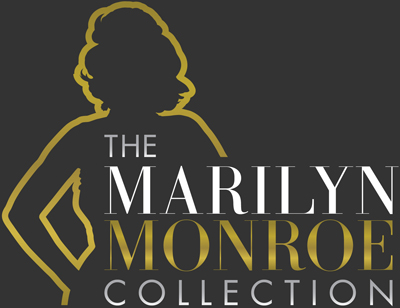A Lace Fan from The Prince and the Showgirl
A Marilyn Monroe used lace fan from the ballroom scene in The Prince and the Showgirl. The fan’s frame and guard are embellished with floral motif carvings embellished with pink, blue, and gold-metallic paint.



Below are screen captures showing Marilyn with the fan in the film.







View the full scene below.
Related Collection Pieces:
– Marilyn Monroe’s “Elsie” Signature Pearl-Encrusted Mermaid Gown from The Prince and the Showgirl
– A Marilyn Monroe Received Fan Letter
– A Marilyn Monroe Received Note and Newspaper Advertisement from Press Agent, Arthur P. Jacobs
– Marilyn Monroe’s Personal 1956 Invoices from the Arthur P. Jacobs Publicity Firm
The Prince and the Showgirl

High meets low both on screen and off in this Britsh-made film, the first and only film made by Marilyn Monroe Productions. Laurence Olivier and his wife Vivien Leigh had starred in the 1953 stage version of Terence Rattigan’s The Sleeping Prince, to which Marilyn’s business partner Milton Greene had purchased the rights. Marilyn supposedly tracked down Rattigan (during a stopover at New York’s Idlewild Airport and won him over to the project). Olivier, Leigh, and Rattigan arrived in New York with Olivier’s agent cecil Tennant to discuss terms in February 1956. marilyn had been eying property since 1954, when her then agency ugh French suggested it to her. Olivier only agreed to reprise his stage role on the condition that he direct and have a credit as its co-producer.
 A press conference was arranged at the Plaza Hotel to tell the world of this momentous screen pairing – England’s finest classical actor and Hollywood’s top screen siren. Although there have been denials of pre-meditation, the evidence is that Marilyn stage-managed the event to perfection, stealing the show from the world’s greatest living actor when she leaned forward and one of her ultra-thin shoulder straps snapped – a trick Marilyn was apparently taught by publicists during her early days at Fox. The photographers went mad. A safety pin was hurriedly found, but the strap broke another two times before the pressmen and snap-happy photographers left the Plaza Terrace room. Marilyn’s careful planning merited front page coverage, though the conference itself was a less than friendly affair as journalists ridiculed her “pretensions.”
A press conference was arranged at the Plaza Hotel to tell the world of this momentous screen pairing – England’s finest classical actor and Hollywood’s top screen siren. Although there have been denials of pre-meditation, the evidence is that Marilyn stage-managed the event to perfection, stealing the show from the world’s greatest living actor when she leaned forward and one of her ultra-thin shoulder straps snapped – a trick Marilyn was apparently taught by publicists during her early days at Fox. The photographers went mad. A safety pin was hurriedly found, but the strap broke another two times before the pressmen and snap-happy photographers left the Plaza Terrace room. Marilyn’s careful planning merited front page coverage, though the conference itself was a less than friendly affair as journalists ridiculed her “pretensions.”
Originally, musical numbers were planned for Marilyn, who plays chorus girl Elsie Marina. This idea was reputedly vetoed by Miller.
 Shooting couldn’t have got off to a worse start. Marilyn, at last breaking out of the straitjacket of typeset sex roles, and eagerly applying the introspection and search for motivation demanded by The Method, was given the direction by Olivier “to be sexy.” In retaliation for what she took to be condescension at the very least, Marilyn resorted to her tried and tested tactics of lateness and absence. Lena Pepitone reports that Marilyn later told her, “He looked at me like he had just smelled a pile of dead fish. He’d say something like, ‘Oh, how simply ravishing, my dear,’ But really he wanted to throw up. I just felt like a little fool the whole time.”
Shooting couldn’t have got off to a worse start. Marilyn, at last breaking out of the straitjacket of typeset sex roles, and eagerly applying the introspection and search for motivation demanded by The Method, was given the direction by Olivier “to be sexy.” In retaliation for what she took to be condescension at the very least, Marilyn resorted to her tried and tested tactics of lateness and absence. Lena Pepitone reports that Marilyn later told her, “He looked at me like he had just smelled a pile of dead fish. He’d say something like, ‘Oh, how simply ravishing, my dear,’ But really he wanted to throw up. I just felt like a little fool the whole time.”
According to cinematographer Jack Cardiff, the problems between Olivier and Marilyn arose because of different approaches to acting. Olivier would tell her how he wanted her to perform a scene, then Marilyn’s drama coach Paula Strasberg would tell her, “Think of Frank Sinatra and Coca Cola,” and she’d forget her lines and go to pieces. Half-way through filming Marilyn’s psychoanalyst Dr. Margaret Hohenberg was flown out to London to help her patient.

At the end of shooting, Marilyn told the assembled cast and crew, “I hope you will all forgive me. it wasn’t my fault. I’ve been sick all through the picture. Please, please, don’t hold it against me.”
Even after shooting, the wrangles continued. By this time Marilyn had fallen out with business partner Milton Greene, convinced that against her will he had re-cut the film. She wrote a long letter to Jack Warner telling hiim as much, and she tried hard to prevent Greene from being credited as executive producer, something they had agreed upon at the outset.
The film premiered at Radio City Music Hall on June 13, 1957. Critical reception was mixed at the time, but Marilyn’s performance has been acknowledged as among her finest, and she easily steals the movie from Olivier. This was also the first movie on which Marilyn’s new standing as an independent contractor made her eligible for a percentage of profits, a highly unusual form of remuneration at the time of the studio system. Marilyn received 10% of profits, which worked out to $160,000.00 since the picture made $1,600,000.00.

Film Reviews:
The Los Angeles Times: This, I am sure, is Miss Monroe’s best cinema effort. Under Olivier’s direction, she reveals a real sense of comedy. Miss Monroe also proves that she can command attention now by other means than her famous hip-swinging walk.
New York Post: Marilyn Monroe has never seemed more in command of herself as a person and comedienne. She manages to make her laughs without sacrificing the real Marilyn to play-acting. This, of course, is something one can expect from great, talented and practices performers. It comes as a most pleasant surprise from Marilyn Monroe, who has been half-actress, half-sensation.









